
The high-energy vibration ball mill is a small desktop laboratory grinding instrument. It uses 1700r/min high-frequency three-dimensional vibration to achieve the result of grinding or mixing the sample. It is placed in a ball mill with a volume of 50ml or 80ml. The minimum processing capacity is 1g, used to test the treatment of small or trace samples, the processing efficiency of QMC4-80ml high-energy vibration ball mill is 3-5 times that of planetary ball mill, and it can be ball milled by dry and wet methods or mixed with different particle sizes and materials. Various solids, suspensions and pastes, and can also be equipped with a vacuum ball mill to achieve vacuum or inert gas protection grinding.
The high-energy vibration ball mill is a small desktop laboratory grinding instrument. It uses 1700r/min high-frequency three-dimensional vibration to achieve the result of grinding or mixing the sample. It is placed in two ball mills with a volume of 50ml or 80ml. The minimum processing capacity is 1g, try to test the treatment of small or trace samples, the processing efficiency of QMC4-160ml high-energy vibration ball mill is 3-5 times that of planetary ball mill, and it can be ball milled by dry and wet methods or mixed with different particle sizes and materials. Various solids, suspensions and pastes, and can also be equipped with a vacuum ball mill to achieve vacuum or inert gas protection grinding;
QMC4-100ml is used for rapid grinding or mixing of small amounts of dry, wet and frozen samples in the laboratory. It can be configured with two 50ml ball mill jars. It can also be configured with a variety of cell wall breaking adapters for biological cell wall breaking and DNA. / RNA and protein extraction, its structure design is compact, the appearance is simple, desktop operation, small size, the use of variable frequency LCD screen control interface to achieve timing, speed regulation, intermittent grinding and other functions, and the setting is simple and fast, the display is intuitive, a The key is activated to complete the sample processing in a few minutes, which is safe and stable, and can be widely used in hard, medium and low hardness, brittle, dry, viscous, fibrous, soft, and elastic samples;
QMC4-250ml is a high-energy oscillating impact multi-functional laboratory ball mill. The desktop type is simple to operate, small in size, comfortable and safe. It provides three kinds of ball mills of tungsten carbide, zirconia and stainless steel with a maximum volume of 125ml. It can provide users with good crushing and grinding effects in a very short time of several minutes or even tens of seconds. It can be dry, wet, vacuum, and frozen. The unique and extremely powerful impact energy makes this product suitable for scientific research, mechanical The field of chemical and mechanical alloys has a very large application space, and strong and fast are the main features of this product;
| Specifications | ||||
| Model | QMC4-80ml | QMC4-160ml | QMC4-100ml | QMC4-250ml |
| Processing principle | Impact force, friction | |||
Apply sample characteristics | Fine, low to medium hardness, brittle, dry or low viscosity | |||
| The processing type | Grind, mix | Pulverize, Mix, Homogenize, Cell Disruption, Freeze Grinding | mechanochemistry, mechanical alloying, pulverization, mixing, homogenization | |
Max injection size | < 1 mm | < 8 mm | < 10 mm | |
Sample size range | 0.1-20 um | 0.1-5 um | 0.1um | |
Max processing volume | 80 ml | 160 ml | 100ml | 250ml |
Ball mill tank maximum speed | 1700 r/min | 180-1800 r/min | ||
| Ball grinding tank movement mode | High-frequency three-dimensional motion | -- | ||
| Planetary disk space movement mode | -- | Y plane arc high frequency reciprocating motion | ||
| Function | Combination lock, continuous and intermittent operation, emergency stop, intermittent timing, running timing, memory, overload protection | Continuous operation, intermittent operation, timing, speed regulation, data storage, power-off memory, overload protection | ||
| Additional features | cooling, windows | quick fastening, sound absorbing layer, stainless steel work table | ||
| control method | -- | LCD display | ||
| crushing time | -- | 10-60s | ||
| Ball mill jar material | Tungsten carbide, zirconia, stainless steel optional | Tungsten Carbide, Zirconia, Stainless Steel, MC Nylon, Teflon etc. | Tungsten Carbide, Zirconia, Stainless Steel | |
| Ball mill jar quantity | 1个 | 2个 | ||
| Ball mill tank volume | 25ml / 50ml / 80ml | 50ml / 30ml | 125ml | |
| Grinding Ball Material | Tungsten carbide, zirconia, stainless steel optional | |||
| Grinding method | dry grinding, wet film, vacuum grinding | dry grinding, wet grinding, cryogenic grinding | dry grinding, wet film, vacuum grinding | |
| Electrical description | 220V AC,50-60Hz,250W | 100-120V/200-240V AC, 50-60Hz, 150W | 100-120V, 200-240V AC, 50-60Hz, 750W | |
| Power port | National standard, European standard, American standard, British standard, etc | |||
| Weight | 35 kg | 68 kg | 35 kg | 126 kg |
Size (length, width and height) | 430×318×268mm | 620×320×268mm | 470×360×250mm | 680×540×320mm |
| Protection class | IP65 | |||
| Standard | CE | |||
| Product Image | 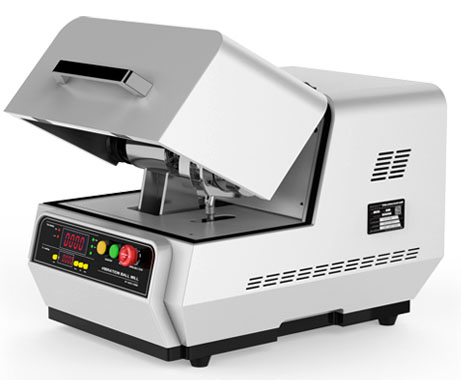 | 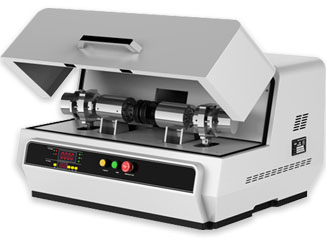 | 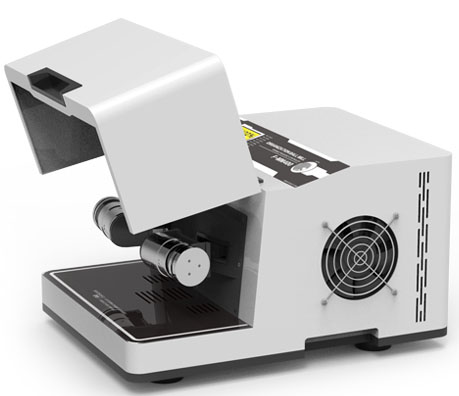 | 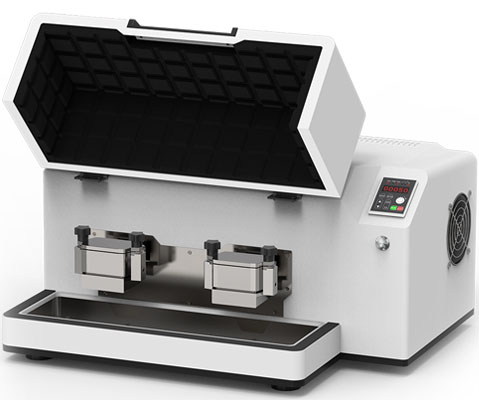 |
| Specifications | |
| ? Model | QMC4-150ml |
| Processing principle | Impact force |
| Apply sample characteristics | Low to medium hardness, brittle, elastic, fibrous, soft |
| The processing type | Grinding, sieving |
| Maximum injection size | < 5 mm |
| Sample size range | 20 um |
| Grinding amount | 1g-20g |
| Vibration frequency | 3000-3600 r/min |
| Vibration amplitude | 3mm |
| Vibration method | 2D |
| Liquid nitrogen freezing method | Invasive |
| Grinding temperature | -196°C -- 40°C |
| Ball mill jar material | Stainless Steel, Tungsten Carbide, Zirconia |
| Number of ball mills | 1 |
| Ball mill tank volume | 150ml |
| Grinding Ball Material | Stainless Steel, Tungsten Carbide, Zirconia |
| Grinding ball diameter | 40-60mm |
| Grinding method | dry grinding, wet grinding, low temperature grinding |
| Screening method | dry sieve, wet sieve |
| Screen diameter | 100mm ' 150mm |
| Dry screening range | 20um - 63mm |
| Wet screening range | 20um - 10mm |
| Maximum screening weight | 3kg |
| Number of screen layers | 2-5层 |
| Key features | Continuous operation, intermittent operation, timing start, timing, one-key repeat, power-off memory, temperature monitoring |
| Additional features | Quick-lock platen with viewing window, funnel for pouring liquid nitrogen, grinding chamber exhaust |
| Drive mode | Mechanical drive |
| Electrical description | 100-120V/200-240V AC, 50-60Hz, 150W |
| Power port | National standard, European standard, American standard, British standard, etc. |
| Weight | 35 kg |
| Size (length, width and height) | 400×300×200mm |
| Protection class | IP65 |
| Standard | CE |
| Add-ons | Wet-type screening with nozzles for locking platens and sieve , low temperature grinding PC guards |
| Product Image | 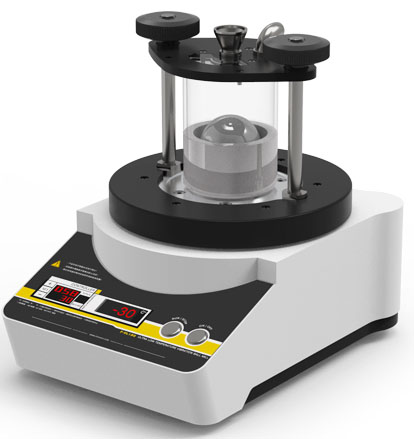 |
For international orders, please ask us for quotes via
Email: contact@scimaterials.cn
Tel: +86 153-5789-9751
Clik here to put quick orders on our Alibaba shop
QMC4 High-speed Vibration Ball Mill Machine (Series C) | |||
Product code | Product description | Price | Delivery date |
| 30040015-1 | QMC4-80ml | Ask for quote | Ask for quote |
| 30040015-2 | QMC4-100ml | Ask for quote | Ask for quote |
| 30040015-3 | QMC4-150ml | Ask for quote | Ask for quote |
| 30040015-4 | QMC4-160ml | Ask for quote | Ask for quote |
| 30040015-5 | QMC4-250ml | Ask for quote | Ask for quote |
| SCI Materials Hub is Committed to Offering The Best Price & Customer Services! | |||
- The price listed above is in U.S. dollars
Worldwide shipping via DHL, SF-Express, FedEx, TNT & other requested carriers.
Payments via Bank Transfer, Paypal, Credit card (via Alibaba), Alipay, Wechat-pay are accepted.
Please contact us for larger quantities or becoming our distributors.
Partial references citing our materials (from Google Scholar)
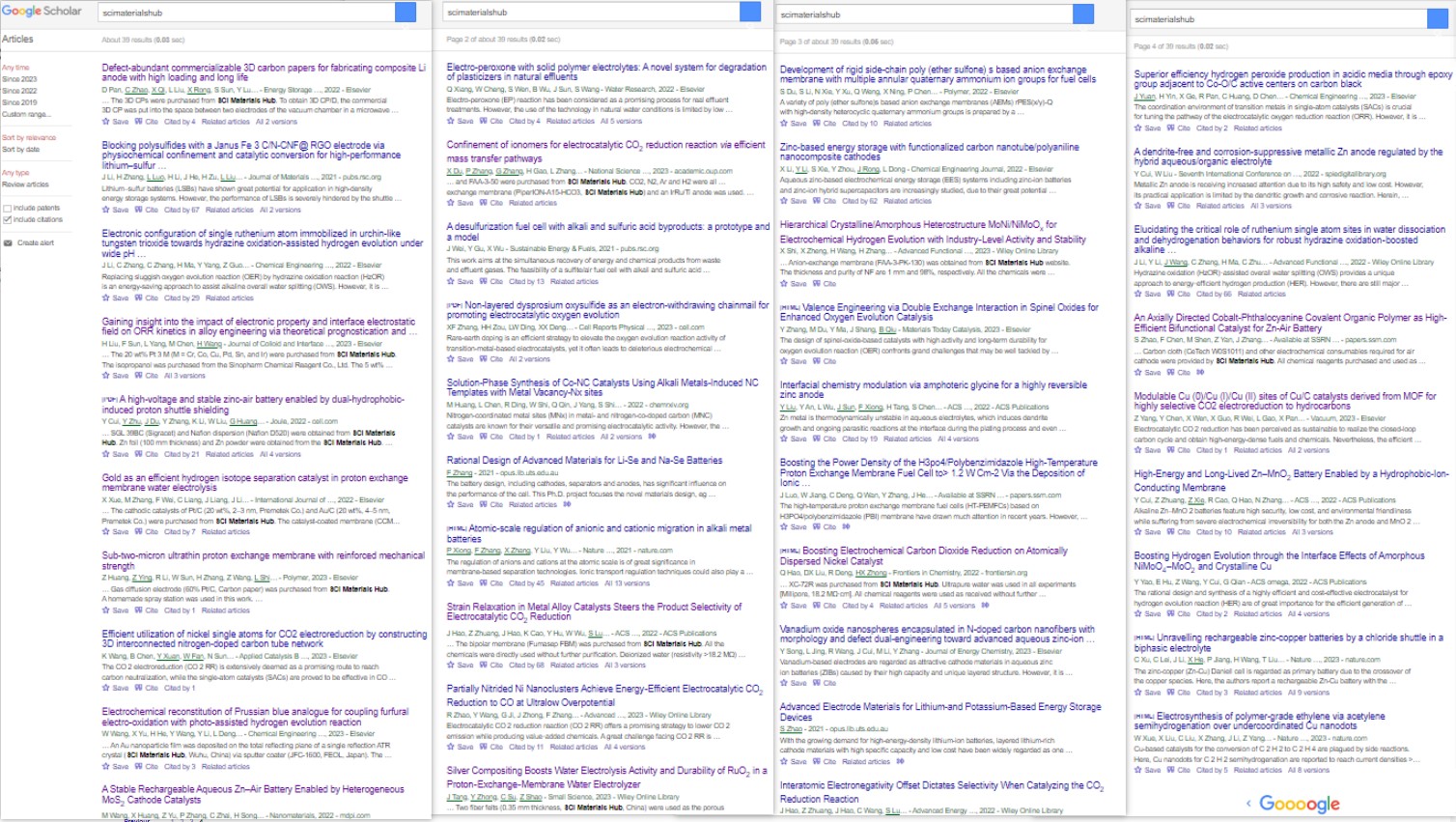
Carbon Dioxide Reduction
1. ACS Nano Strain Relaxation in Metal Alloy Catalysts Steers the Product Selectivity of Electrocatalytic CO2 Reduction
The bipolar membrane (Fumasep FBM) in this paper was purchased from SCI Materials Hub, which was used in rechargeable Zn-CO2 battery tests. The authors reported a strain relaxation strategy to determine lattice strains in bimetal MNi alloys (M = Pd, Ag, and Au) and realized an outstanding CO2-to-CO Faradaic efficiency of 96.6% with outstanding activity and durability toward a Zn-CO2 battery.
2. Front. Chem. Boosting Electrochemical Carbon Dioxide Reduction on Atomically Dispersed Nickel Catalyst
In this paper, Vulcan XC-72R was purchased from SCI Materials Hub. Vulcan XC 72R carbon is the most common catalyst support used in the anode and cathode electrodes of Polymer Electrolyte Membrane Fuel Cells (PEMFC), Direct Methanol Fuel Cells (DMFC), Alkaline Fuel Cells (AFC), Microbial Fuel Cells (MFC), Phosphoric Acid Fuel Cells (PAFC), and many more!
3. Adv. Mater. Partially Nitrided Ni Nanoclusters Achieve Energy-Efficient Electrocatalytic CO2 Reduction to CO at Ultralow Overpotential
An AEM membrane (Sustainion X37-50 Grade RT, purchased from SCI Materials Hub) was activated in 1 M KOH for 24 h, washed with ultra-purity water prior to use.
4. Adv. Funct. Mater. Nanoconfined Molecular Catalysts in Integrated Gas Diffusion Electrodes for High-Current-Density CO2 Electroreduction
In this paper (Supporting Information), an anion exchanged membrane (Fumasep FAB-PK-130 obtained from SCI Materials Hub (www.scimaterials.cn)) was used to separate the catholyte and anolyte chambers.
SCI Materials Hub: we also recommend our Fumasep FAB-PK-75 for the use in a flow cell.
5. Appl. Catal. B Efficient utilization of nickel single atoms for CO2 electroreduction by constructing 3D interconnected nitrogen-doped carbon tube network
In this paper, the Nafion 117 membrane was obtained from SCI Materials Hub.
In this paper, Proton exchange membrane (Nafion 117), Nafion D520, and Toray 060 carbon paper were purchased from SCI Materials Hub.
7. National Science Review Confinement of ionomer for electrocatalytic CO2 reduction reaction via efficient mass transfer pathways
An anion exchange membrane (PiperION-A15-HCO3) was obtained from SCI Materials Hub.
8. Catalysis Communications Facilitating CO2 electroreduction to C2H4 through facile regulating {100} & {111} grain boundary of Cu2O
Carbon paper (TGPH060), membrane solution (Nafion D520), and ionic membrane (Nafion N117) were obtained from Wuhu Eryi Material Technology Co., Ltd (a company under SCI Materials Hub).
Batteries
1. J. Mater. Chem. A Blocking polysulfides with a Janus Fe3C/N-CNF@RGO electrode via physiochemical confinement and catalytic conversion for high-performance lithium–sulfur batteries
Graphene oxide (GO) in this paper was obtained from SCI Materials Hub. The authors introduced a Janus Fe3C/N-CNF@RGO electrode consisting of 1D Fe3C decorated N-doped carbon nanofibers (Fe3C/N-CNFs) side and 2D reduced graphene oxide (RGO) side as the free-standing carrier of Li2S6 catholyte to improve the overall electrochemical performance of Li-S batteries.
This paper used more than 10 kinds of materials from SCI Materials Hub and the authors gave detailed properity comparsion.
The commercial IEMs of Fumasep FAB-PK-130 and Nafion N117 were obtained from SCI Materials Hub.
Gas diffusion layers of GDL340 (CeTech) and SGL39BC (Sigracet) and Nafion dispersion (Nafion D520) were obtained from SCI Materials Hub.
Zn foil (100 mm thickness) and Zn powder were obtained from the SCI Materials Hub.
Commercial 20% Pt/C, 40% Pt/C and IrO2 catalysts were also obtained from SCI Materials Hub.
3. Journal of Energy Chemistry Vanadium oxide nanospheres encapsulated in N-doped carbon nanofibers with morphology and defect dual-engineering toward advanced aqueous zinc-ion batteries
In this paper, carbon cloth (W0S1011) was obtained from SCI Materials Hub. The flexible carbon cloth matrix guaranteed the stabilization of the electrode and improved the conductivity of the cathode.
4. Energy Storage Materials Defect-abundant commercializable 3D carbon papers for fabricating composite Li anode with high loading and long life
The 3D carbon paper (TGPH060 raw paper) were purchased from SCI Materials Hub.
5. Nanomaterials A Stable Rechargeable Aqueous Zn–Air Battery Enabled by Heterogeneous MoS2 Cathode Catalysts
Nafion D520 (5 wt%), and carbon paper (GDL340) were received from SCI-Materials-Hub.
Carbon cloth (W0S1011) and other electrochemical consumables required for air cathode were provided by SCI Materials Hub.
Oxygen Reduction Reaction
1. J. Chem. Eng. Superior Efficiency Hydrogen Peroxide Production in Acidic Media through Epoxy Group Adjacent to Co-O/C Active Centers on Carbon Black
In this paper, Vulcan XC 72 carbon black, ion membrane (Nafion N115, 127 μL), Nafion solution (D520, 5 wt%), and carbon paper (AvCarb GDS 2230 and Spectracarb 2050A-1050) were purchased from SCI Materials Hub.
2. Journal of Colloid and Interface Science Gaining insight into the impact of electronic property and interface electrostatic field on ORR kinetics in alloy engineering via theoretical prognostication and experimental validation
The 20 wt% Pt3M (M = Cr, Co, Cu, Pd, Sn, and Ir) were purchased from SCI Materials Hub. This work places emphasis on the kinetics of the ORR concerning Pt3M (M = Cr, Co, Cu, Pd, Sn, and Ir) catalysts, and integrates theoretical prognostication and experimental validation to illuminate the fundamental principles of alloy engineering.
Water Electrolysis
1. International Journal of Hydrogen Energy Gold as an efficient hydrogen isotope separation catalyst in proton exchange membrane water electrolysis
The cathodic catalysts of Pt/C (20 wt%, 2–3 nm) and Au/C (20 wt%, 4–5 nm) were purchased from SCI Materials Hub.
2. Small Science Silver Compositing Boosts Water Electrolysis Activity and Durability of RuO2 in a Proton-Exchange-Membrane Water Electrolyzer
Two fiber felts (0.35 mm thickness, SCI Materials Hub) were used as the porous transport layers at both the cathode and the anode.
3. Advanced Functional Materials Hierarchical Crystalline/Amorphous Heterostructure MoNi/NiMoOx for Electrochemical Hydrogen Evolution with Industry-Level Activity and Stability
Anion-exchange membrane (FAA-3-PK-130) was obtained from SCI Materials Hub website.
Fuel Cells
1. Polymer Sub-two-micron ultrathin proton exchange membrane with reinforced mechanical strength
Gas diffusion electrode (60% Pt/C, Carbon paper) was purchased from SCI Materials Hub.
Characterization
1. Chemical Engineering Journal Electrochemical reconstitution of Prussian blue analogue for coupling furfural electro-oxidation with photo-assisted hydrogen evolution reaction
An Au nanoparticle film was deposited on the total reflecting plane of a single reflection ATR crystal (SCI Materials Hub, Wuhu, China) via sputter coater.

|
We Provide A Broad Range of Materials, Instruments & Solutions in Advanced Science and Technologies | About Us |



